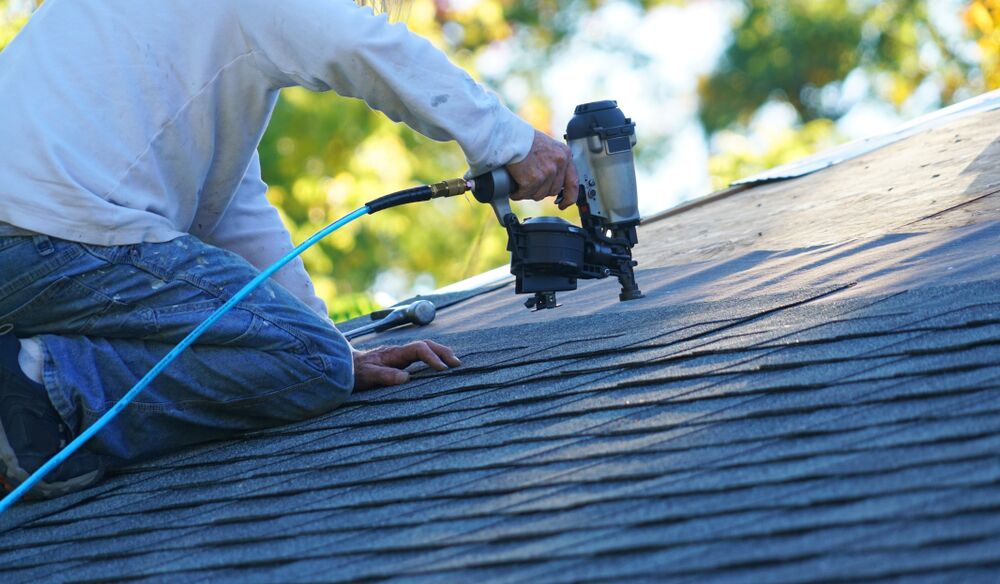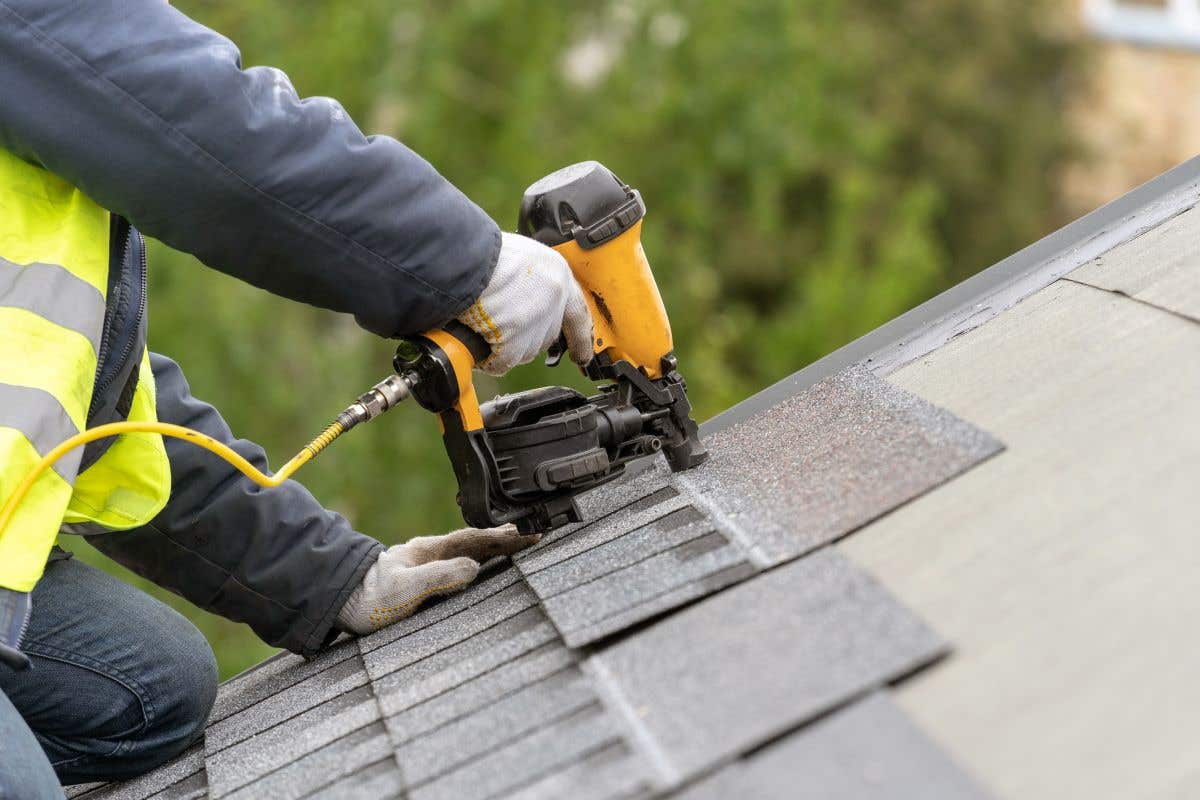Roofing Companies Oahu: Relied On Experts for Your Roofing Demands
Roofing Companies Oahu: Relied On Experts for Your Roofing Demands
Blog Article
Exploring the Different Sorts Of Roofing Systems: Which One Is Ideal for Your Home?
When considering the myriad types of roofs available, it is important to examine exactly how each choice lines up with your home's special needs, consisting of environment problems, aesthetic preferences, and structural functionality. From the classic gable roof that efficiently networks rain to the modern-day level roofing offering metropolitan versatility, each style presents distinct benefits and obstacles.
Gable Roofings
Saddleback roofs, defined by their triangular shape and sloping sides, are a popular choice amongst house owners looking for both aesthetic appeal and capability. This roofing style effectively permits reliable water overflow, decreasing the risk of water merging and succeeding damage. In addition, the high slopes develop adequate attic room, which can be used for storage and even transformed right into living areas.
Among the main advantages of saddleback roofs is their capability to withstand rough weather. The layout assists in minimizing wind resistance, making them especially suitable for locations prone to tornados. Additionally, gable roofs can be built using a range of materials, consisting of shingles, ceramic tiles, and metal, supplying homeowners with versatility in design and budget plan.
From a building point of view, gable roof coverings can improve the aesthetic appeal of a home, using a classic and classic look. They can enhance various building designs, from conventional to contemporary layouts. However, it is important to consider prospective downsides, such as the susceptibility to snow accumulation in chillier environments. Overall, gable roofing systems stay a popular option because of their balance of usefulness and design, appealing to a broad variety of house owners.
Apartment Roofs
While commonly neglected in support of even more typical roof covering designs, flat roof coverings use one-of-a-kind benefits that provide to certain architectural requirements and modern-day layout preferences. These roofing systems are characterized by their very little pitch, enabling reliable usage of space, specifically in city settings where taking full advantage of square video footage is vital.
One significant benefit of level roofings is their adaptability. They can be used as additional space, such as roof gardens, patios, or photovoltaic panel setups, enhancing the capability of a home. Additionally, flat roofs are commonly much easier and safer to browse during maintenance, promoting repair services and inspections without the obstacles positioned by high slopes.
Level roofings can also be extra affordable in regards to materials and installment. With an easier layout, they typically require fewer sources, equating right into lower labor prices. However, it's vital to consider water drainage and waterproofing, as flat roofings can be vulnerable to pooling water otherwise properly made.

Hip Roof Coverings
Hip roofs stick out for their classy design and structural stability, making them a preferred choice among house owners. Identified by inclines on all four sides, hip roofing systems supply a healthy visual that complements various architectural styles - roof repair oahu. The in proportion nature of these roof coverings aids to distribute weight evenly, improving stability and longevity
Among the key advantages of hip roofing systems is their capability to stand up to extreme weather. The sloped surface areas promote reliable water drain and snow runoff, reducing the risk of leaks and structural damage. Additionally, the design decreases wind resistance, making hip roofs much less at risk to wind uplift contrasted to various other roofing types.


Shed Roof Coverings
Dropped roofs, in comparison to the complexity of hip roof coverings, provide a structured and minimalist design that interest modern-day looks. Characterized by a solitary sloping surface, dropped roofing systems are usually used in modern design, yard sheds, and other practical structures. This More hints simplicity not just enhances aesthetic allure however additionally enables for reliable water runoff, making them appropriate for numerous climates.
Among the primary advantages of shed roofings is their cost-effectiveness. With less products called for and a straightforward setup procedure, home owners can conserve both money and time. The design also permits the consolidation of big home windows or skylights, advertising all-natural light and developing sizable insides.
Nonetheless, it is vital to think about the prospective disadvantages, including restricted insulation choices and the requirement for cautious style to prevent extreme warm accumulation. Furthermore, dropped roofing systems may not blend seamlessly with traditional architecture, which could be a concern for some homeowners.
Inevitably, lost roof coverings offer a functional and elegant roof solution for those seeking modernity and performance. When choosing a roofing type, evaluating individual practical requirements and visual choices will guide homeowners to the most effective option for their unique demands.
Mansard Roofings
Mansard roofing systems, characterized by their distinct four-sided style, are a characteristic of French design that combines style with performance. This architectural design features 2 slopes on each side, with the reduced slope being steeper than the top one. The special configuration permits for additional living room in the upper degrees, making it a suitable choice for home owners seeking to make the most of useful area without broadening the building's footprint.
Among the significant benefits of a mansard roof is its adaptability. It can be adapted to different building styles, from standard to modern, improving the visual appeal of any type of home. In addition, the sufficient area developed under the roofing system can quickly accommodate dormer windows, which enable all-natural light and ventilation, additional boosting the comfort of the living area.
However, potential homeowners should consider the maintenance requirements linked with mansard roofs. Installment prices might be greater contrasted to easier roofing system styles due to the complexity of construction.
Conclusion
Each roof design provides one-of-a-kind advantages, such as the performance of gable roofing systems, the modern-day charm of shed roof go now coverings, and the stability of hip roof coverings. Flat roof coverings provide usefulness for urban atmospheres, while mansard roofs offer added living space in spite of greater installation expenses.
From the timeless gable roofing system that successfully channels rainwater to the contemporary level roofing system offering metropolitan flexibility, each style provides distinctive benefits and challenges (roof repair oahu). Furthermore, the layout minimizes wind resistance, making hip roofing systems much less at risk to wind uplift contrasted to other roofing system kinds
Lost roofs, in contrast to the complexity of hip roofing systems, use a minimalist and streamlined design that charms to contemporary aesthetics. Each roofing style presents distinct advantages, such as the effectiveness of gable roofings, the modern-day allure of shed roof click here now coverings, and the security of hip roofs. Flat roofs offer practicality for urban environments, while mansard roofing systems offer extra living space despite higher installation costs.
Report this page